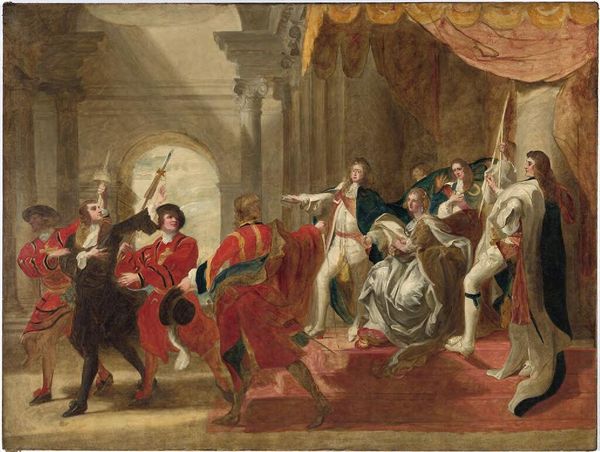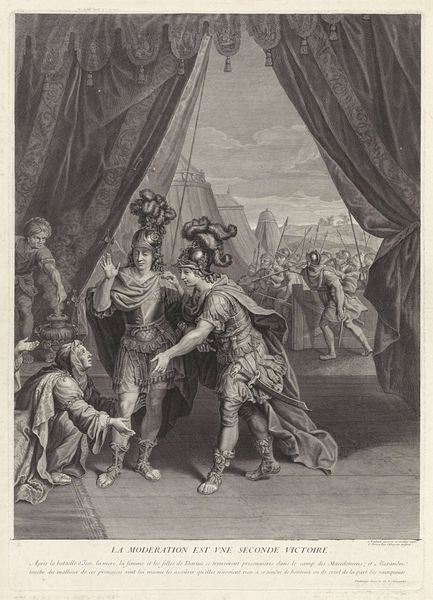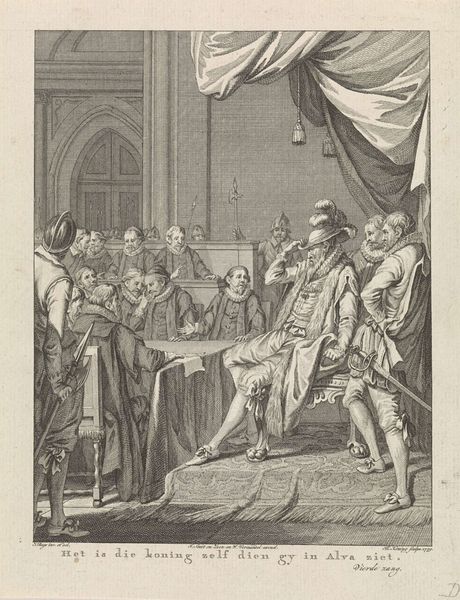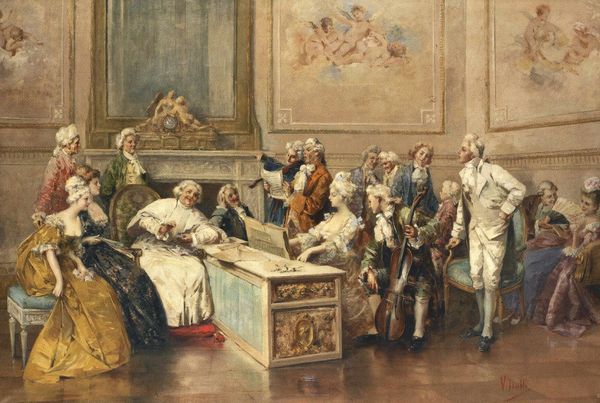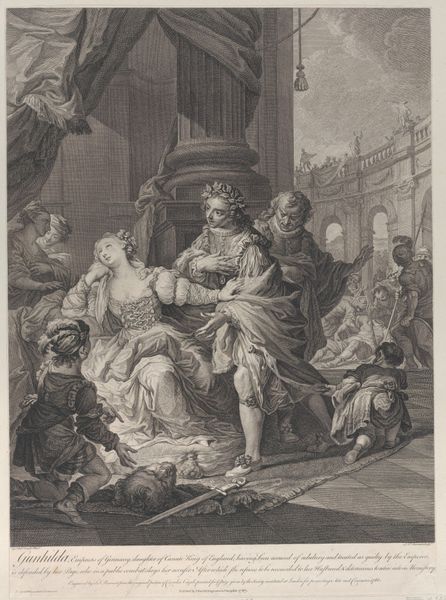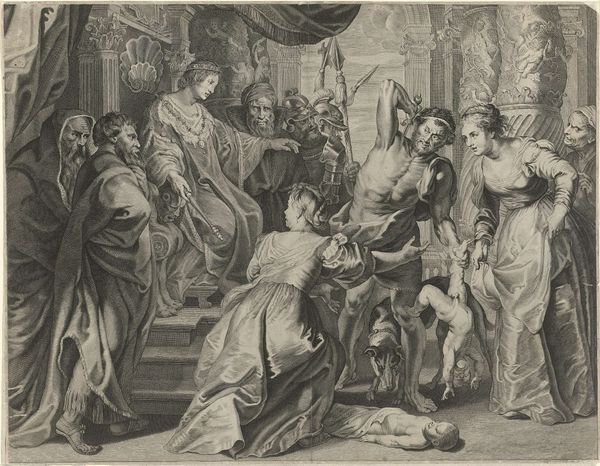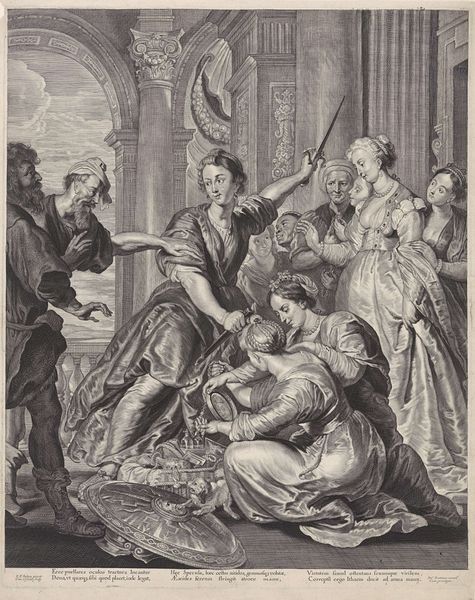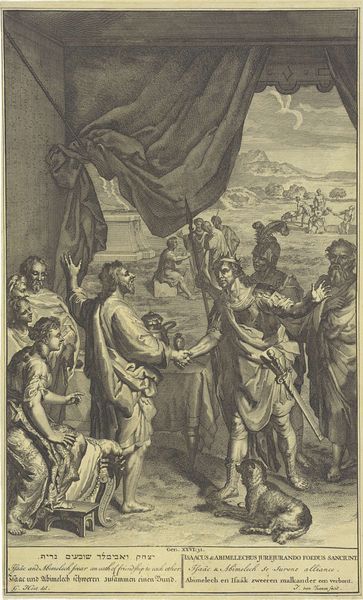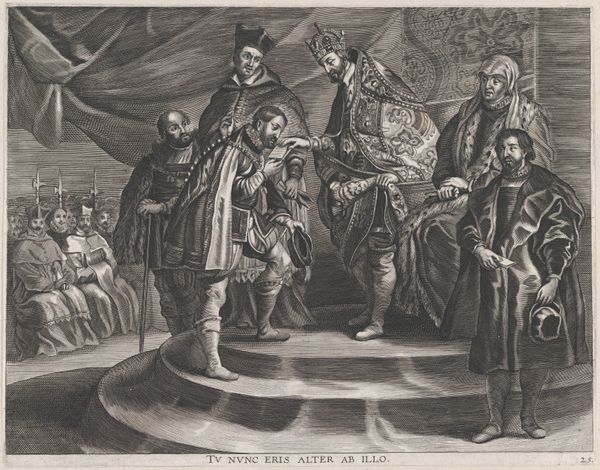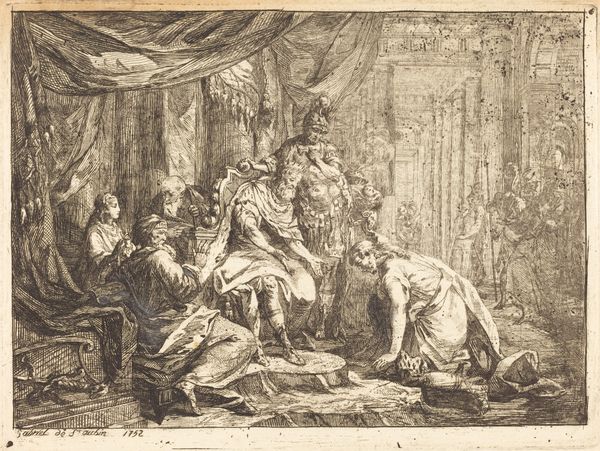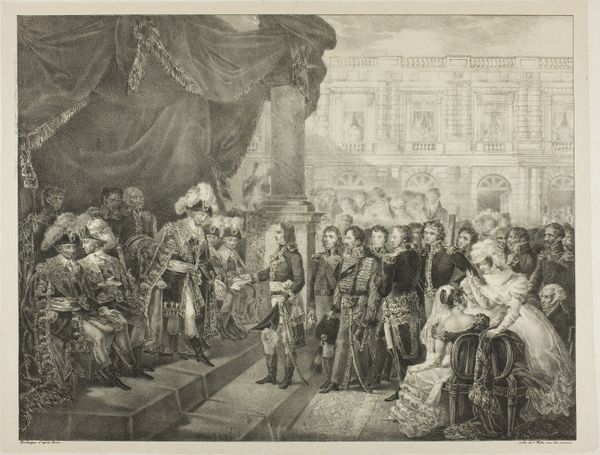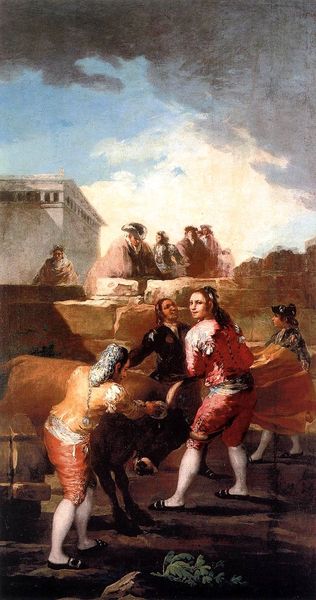
Copyright: Public domain
Marcello Bacciarelli painted "Union of Lublin" in the late 18th century. The painting presents a scene dominated by rich, warm colors and a dynamic composition where figures are grouped to emphasize the historic union. Notice how Bacciarelli uses the figures to create an ascending visual rhythm, from the lower groups to the raised flags at the center, symbolizing unity. This formal structure echoes the painting's theme: the integration of Poland and Lithuania. The artist employs specific visual elements to convey political ideas. The flags are not merely decorative; they signify the combined identity of the two nations. The detailed rendering of textures, from the soft fabrics to the hard armor, functions semiotically, distinguishing social roles and power. The way the light catches on the regal garments and polished armor serves to highlight the painting’s ideological underpinnings, representing a unified, powerful state. As you contemplate this painting, consider how its formal elements engage with broader themes of national identity and political consolidation, continually shaping and reshaping its significance.
Comments
No comments
Be the first to comment and join the conversation on the ultimate creative platform.
